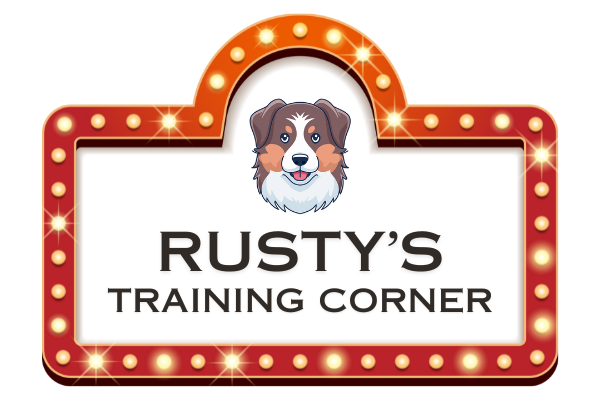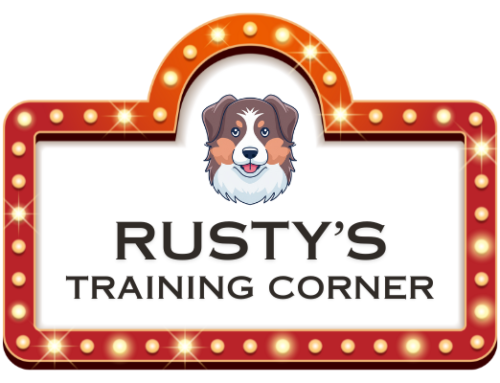Puppies, and even older dogs, can make us crazy with play nipping. Especially when it’s our hands, ears, nose, and ankles. Puppy teeth hurt! Before you think they are spitefully “going after” you, please consider the following.
- Dogs are born hard-wired to chase motion. It helps their prey drive. The worst thing you can do when they nip you is to wave around your hands or kick your ankles. They think that’s part of the game and will go after you with that much more fervor.
- The second worst thing you can do is to push the dog away from you. Dogs are born with a behavior called Natural Opposition Reflex. Natural Opposition Reflex is the desire to push against what pushes them, and pull against what pulls them. So, if you push them away from you, they will spring right back at you.
TRY THIS FIRST STEP
Let’s look at a scenario of puppies playing with each other, grabbing ears and feet. When one dog grabs another dog too hard, the nipped dog will turn and Yip then walk away from the nipping dog. He has used the Yip and walking away to communicate to the other dog that he is taking away his attention and won’t play until things simmer down. The Yip and walking away has interrupted the nipping dog, causing the nipping dog to change his behavior if he wants his playmate to come back.
Learn from the dogs. When your dog goes after your hands, you are going to yell OUCH loudly enough to cause your dog to stop the nipping and pull back from you. Keep your hand in front of the dog but have it go limp, and wait a moment. Most times the dog will withdraw and quickly move forward again and start licking your hand. This is a dog’s way of apologizing. In essence he’s saying “oh, am I bad, so sorry, didn’t mean to hurt you”. When he stops the nipping and pulls back and/or apologizes, you are going to calmly praise your dog and return to what you were doing prior, such as petting or playing with your pup.
SECOND STEP – TIME OUT
Yelping OUCH doesn’t work with every dog. Some dogs think it’s an invite to play, especially if your voice is higher-pitched.
If you do the Yip and walk away, and after several repetitions your dog goes right back at your hands, or is grabbing at your ankles, use a time-out. Time-outs are great for teaching your dog that the consequence of using his teeth on you is being put into solitary confinement. There are rules to using the time-out successfully, though, and they need to be followed correctly.
First, a time-out area is any spot where the dog can be quickly put that has no food, no toys and no human contact. This is meant to be a blast of solitary confinement for about 30 SECONDS to no longer that THREE MINUTES. You are not going to put your dog into a time-out and then leave him for 60 minutes – that’s too long, the lesson will be lost, and also becomes a punishment rather than a consequence. The purpose of the time-out area is to give the dog a breather, not a punishment. However, you want to be sure there are no toys or food so he can then entertain himself when put into the area … and you want to be sure there are no family members within view or he will attempt to bark for their attention. Never use a dog’s kennel for a time out, or any type of punishment for that matter. You want your dog to succeed in learning the association of “teeth on skin gets solitary confinement” so be sure the above items/people are not available to lessen the impact of learning the association. A bathroom is a great time-out area. Be sure to pick up the wastebasket and put the bathroom tissue out of reach.
Second, the time-out area must be within 3 seconds of where the offense took place because your dog’s brain thinks in the present. You have no longer than 3 seconds to get your dog into a time-out area in order for your dog to learn the association that his teeth on your skin results in a time-out.
Not sure how to get to the time-out place within 3 seconds? It’s easy – hold practice sessions in the hallway outside of the bathroom. If your dog likes to nip your ankles, start to walk and/or kick outside the bathroom door – do whatever it is you dog that causes your dog to nip your ankles. When your dog nips your ankle, immediately say Time-Out, take the dog’s collar (or put a leash on him for the practice) and calmly walk him/her into the bathroom. (Don’t drag him or throw him into the room – be calm, but firm and walk him into the bathroom.) Close the door and walk away. As long as the dog remains quiet, then return in 30 seconds and praise the dog as you open the door and let him/her out. Then return to kicking, and if the nipping starts again simply repeat the process. Do this for three repetitions and then stop for a couple of hours.
Do the same thing with hand nipping. You can even start this by sitting in the bathroom and getting the dog to start nipping at your hands. When that happens, say OUCH and stop moving your hands. If the dog becomes quiet, praise and return to what you were doing with the dog. If the dog keeps nipping at you, say Time-Out and put the dog on the floor, leave the bathroom and close the door.
COMMITMENT & CONSISTENCY
Your commitment to holding these practice sessions combined with your consistency to when you say Time Out is what will teach the dog the association that teeth on skin immediately results in solitary confinement. That means that you need to hold these practice sessions 2-3x days for up to 2-3 weeks. Remember … this nipping behavior is the normal way for a dog to communicate so your sessions are meant to teach a complete behavior modification of what he thinks is normal behavior … and that takes time and repetition. Normally, it takes a dog approximately 60 repetitions to start to fully understand what you are teaching. It’s my personal opinion, though, that it takes approximately 2,000 repetitions for a puppy to understand the association of the teeth on skin and the time-out.
It also means that you need to CONSISTENTLY stop the behavior the first time, every time, that you dog puts his teeth on you. No thinking, “well, it wasn’t so hard this time so I’ll let it slide.” Or, “he’s just so cute that I’ll ignore it this time.” That kind of thinking from you won’t teach your dog to stop biting, but will teach your dog to keep trying until he becomes successful. Dogs play the odds and if you’ve let some instances slip by, then YOU are contributing to your own problems. Any behavior that is intermittently rewarded will become stronger! Which means, that if you let it “just this one time” you have rewarded the dog … and YOU have just made the nipping that much more normal, rewarding, and likely to be repeated. If you are sloppy with your communication, your dog will then be sloppy with executing what you are trying to teach. Your consistency with when you say Time Out is one of the most critical components to your dog learning not to nip.
PROPER HAND INTERACTION – AN ADDITIONAL HELP
In addition to using the OUCH and Time Out, you can also teach your dog that the better way to get your attention is to lick your hand rather than nipping it.
Take some peanut butter (or canned dog food, applesauce, baby food, cream cheese, spray cheese, Kong spray) and spread a little on the top of your hand. Let your dog lick it off. Here’s what will happen: he’ll lick it off and then will stop to look around to see if any dropped on the floor and will then return for another lick just to make sure that he got all of it. When he RETURNS for that second lick, you will say Yes (to let him know that is what you wanted) and reward him by putting more on your hand. This will, again, cause him to lick it off … sniff around … and return for another lick. At which time you will again say Yes, and reward with another spreading of whatever you’re using. By waiting until he returns to lick and rewarding that you are teaching him that when he initiates the licking on his own, he gets rewarded.
NEVER DO THESE THINGS
NEVER use your hands as toys or in competition with your dog’s mouth. In other words, stop pushing and wrestling with him to get him to play – YOU are only inviting him to use his mouth in order to be part of the game. Let him chase a toy, but never use your hands as toys.
Don’t yell at the dog – your emotional yelling might actually make the behavior worse. Remember you are teaching the dog to think and learn, rather than frightening the dog into a compliance that they don’t understand. The use of scare tactics is an outdated technique, and behaviorists have now learned that you need to focus on what you want the dog to do and keep rewarding that in order to successfully teach a dog what you want.
Be sure you aren’t petting your dog into him wanting to nip you in order to get you to stop petting. Not all dogs like to be petted in the same way. Some have special spots like the front of their chest or the tops of their shoulder blades. Some prefer to be lightly petted, some a more firm touch, some a deeper touch. Get in tune with your dog when you are petting him/her. Don’t pet your dog the way you want to – pet your dog the way he/she wants you to touch them.
EXERCISE
Exercise is vitally important to having a successful relationship with your dog. Highly active breeds require more exercise than some other breeds, so also keep that in mind. Dogs need to run! Make sure they are getting 1-2 hours every day of running and active play time. This can be a combination of walking on leash and running in the yard, but a simple walk around the block every day is not enough. A tired dog is a calm dog, so get your dog enough exercise and you will see that it minimizes their need to nip at your in their attempt to get you to PLAY! Get outdoors with your dog and throw a Frisbee or ball – let them run to play rather than pulling on your shirtsleeves.
TOYS ARE SO IMPORTANT
Chew toys are an absolute necessity. Stay away from rawhide that they can chew bits off potentially getting it stuck in their throats. Rawhide can become dangerous and a dog should never be left alone with a rawhide bone.
Bully sticks are great for your dog. Be sure you get a good thick stick so they can chew it down, but not break off any pieces of it. When they can fit the entire stick in their mouth, then it’s time to throw it out. You can find them at local pet stores but this website has the best selection, www.bullysticks.com – check out the jumbo select. As with the rawhides, never leave your dog alone with a bully stick.
EXERCISE THE BRAIN
Exercising your dog’s brain can also go a long way to diminish the nipping and help to satiate their desire to be doing something!
Find toys that both exercise their jaws AND their brains. Look for interactive and/or puzzle toys. Kong toys can be stuffed with food that they have to figure out how to get out. See www.kongcompany.com and be sure to visit their suggested recipes. Buster Cube is another puzzle toy that keeps your dogs working their brains and their mouths. See www.bustercube.com.
WHAT ELSE WILL HELP?
Training. ALL dogs need training. All dogs need to learn an entire set of good manners so you can have successful communication with them. Dogs need to learn eye contact with you, sit, down, wait at the door, stay, come, drop it, leave it, wait for permission, settle and walking nicely on a leash. If you don’t know how to teach these behaviors using positive reinforcement methodology, then call upon a professional trainer to help you. Waiting until the dog is 8 months old before you realize that you don’t know how to train the dog the right way only slows down your communication with your pup … and it makes the training take that much longer because now we have to undo the wrong behaviors in order to embed the right behaviors.
GETTING OLDER
Dogs lose their puppy teeth between 5-6 months old, and once their adult teeth are in the nipping also starts to minimize. However, it will never entirely go away until you teach the dog that inhibiting their bite and putting teeth on human skin is a no-no. So, if your dog is still nipping at you, YOU need to teach the dog what to do rather than waiting for the dog to figure it out on his own.
The advice and tips provided in this dog training blog post are based on general best practices and personal experiences. Please consult a professional dog trainer or veterinarian for specific issues or before starting any new training regimen with your dog.




